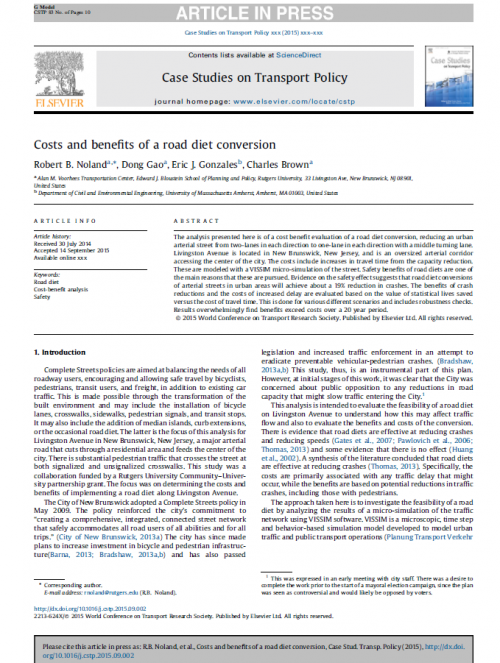The analysis presented here is of a cost benefit evaluation of a road diet conversion, reducing an urban arterial street from two-lanes in each direction to one-lane in each direction with a middle turning lane. Livingston Avenue is located in New Brunswick, New Jersey, and is an oversized arterial corridor accessing the center of the city. The costs include increases in travel time from the capacity reduction. These are modeled with a VISSIM micro-simulation of the street. Safety benefits of road diets are one of the main reasons that these are pursued. Evidence on the safety effect suggests that road diet conversions of arterial streets in urban areas will achieve about a 19% reduction in crashes. The benefits of crash reductions and the costs of increased delay are evaluated based on the value of statistical lives saved versus the cost of travel time. This is done for various different scenarios and includes robustness checks. Results overwhelmingly find benefits exceed costs over a 20 year period.
Read full report: Costs and Benefits of a Road Diet Conversion (2015)

